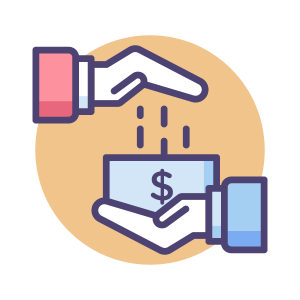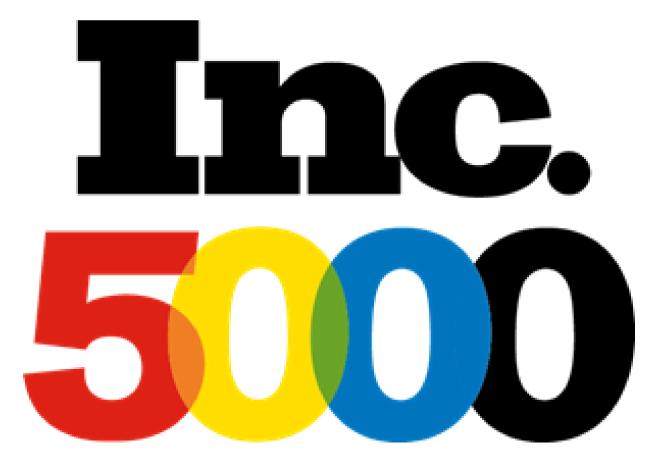Grantmaking is a crucial process that enables organizations and non-profits to secure funding from various sources to support their mission and projects. However, the traditional grant application process can be time-consuming, tedious, and paper-intensive, leading to administrative burdens for funders and grant-seekers. In today’s digital age, software solutions can significantly improve the grant application experience for both parties.
A recent study encompassing more than 2,500 foundation reviews on GrantAdvisor.org found that grant application management consumes approximately 20-30% of grantmakers’ time. What are the primary sources of frustration? They include the inability to view the complete application, the disproportionate time spent applying compared to the funding granted, and the need for an option to save the application for later editing.
Let’s explore effective methods to streamline the application process, enhancing your ability to review and respond promptly while ensuring visibility and traceability. How can you utilize technology and Software to fulfill your requirements and advance alongside your program?

Utilizing Technology for Streamlining the Grant Application Process
One significant benefit of using technology and Software in grantmaking is streamlining the application process. By utilizing online platforms or grant management systems, funders can design a standardized application form that collects only essential information relevant to their funding priorities. This eliminates the need for extensive paperwork, reduces the administrative burden, and saves time for both parties.
Moreover, online forms or portals allow funders to view the complete application in one place, eliminating the need for applicants to submit multiple documents via email or mail. This also makes it easier for funders to track and manage applications, ensuring timely responses and minimizing the risk of losing important information.
What makes for a positive application journey?
The scale of the grant, which refers to the size or amount of funding awarded, the number of applicants applying for it, and the specific category or focus of the grant, can often result in a significant number of submissions. This influx of applications challenges ensuring that each application is received, reviewed, and processed accurately and efficiently. Without a well-defined and streamlined process, there is a risk of spending more time on administrative tasks such as sorting through paperwork rather than on the crucial task of evaluating and selecting the most deserving applications. A successful application journey relies on adhering to key fundamental principles that lay the groundwork for a fair, transparent, and effective grant review process:
Consistency: Have you ever noticed how often you answer the same question repeatedly? How many times have you found yourself recreating the same document over and over again? When these scenarios become part of your workflow, maintaining consistency within your system becomes not just important but crucial. By setting up a standardized set of responses, documents, notifications, and other elements, you can constantly avoid starting from scratch. Utilizing templates is vital in ensuring consistency, as they offer clear instructions to applicants regarding requirements, thus not only saving time and effort but streamlining the process for all parties involved.
Transparency: This principle of transparency is fundamental for fostering trust and accountability in grant management. It involves clear communication between the grant management team and applicants and within the team itself. By maintaining transparency, all stakeholders can better understand the requirements and submission processes, leading to more efficient and effective grant management. Effective communication is key to ensuring that all parties are on the same page and that potential issues are addressed promptly. When selecting a grants management system, opt for one that provides clear instructions on required documents and deadlines, as this can streamline the process and reduce errors. Additionally, quickly identifying and rectifying any missing or incorrect details is essential for maintaining the integrity of the grant management process.
Automation: Automation is often perceived as a system that carries out tasks automatically. While this is true to some extent, automation goes beyond mere automatic execution. It focuses on advancing through workflows seamlessly, eliminating the necessity of manual tasks assignment or deciding on subsequent actions. The primary objective is to drive processes forward efficiently and ensure timely notifications are delivered to the appropriate individuals for necessary actions. Through the removal of uncertainty, automation consistently guides tasks to the correct recipients, streamlining operations and enhancing productivity.

What key features will help you improve the grant application process?
Focusing on the three crucial pillars highlighted earlier—transparency, consistency, and automation—can significantly elevate the efficiency and effectiveness of your application review processes. Incorporating features that promote transparency by providing clear insights, ensuring consistency in evaluations, and streamlining tasks through automation will optimize your workflow and enhance the overall user experience. By embracing these essential features, you can establish a solid foundation for a robust and reliable application review system.
Eligibility Filtering: One crucial aspect of the grantmaking process is prioritizing organizations that closely align with your vision and goals. By implementing this strategic measure from the outset, you effectively streamline the applicant pool, excluding those who do not meet the specific criteria you have established. This early filtering stage not only enhances the efficiency of the selection process but also ensures that resources are directed towards organizations that best fit the intended scope and objectives of the grant programs.
Grantee Portals: These portals act as an efficient platform explicitly designed for grantees, allowing them to monitor their applications’ progress easily. They also serve as a channel through which grantees can access information regarding any additional requirements you may have. By facilitating this two-way communication, these portals are crucial in promoting transparency and fostering a deeper understanding between applicants and your team.
Tracked Communications: It is crucial to ensure that all communication is tracked correctly and linked to the relevant process. This includes emails, notes, and any additional requests made. Maintaining this detailed tracking system makes every aspect of communication interconnected, thus eliminating the need for external communication tools that might introduce unnecessary clutter and confusion.
Support for Diverse Media Formats: Nowadays, an increasing number of organizations are harnessing the power of video and various media formats to enrich the depth and quality of the application process. By providing diverse options, organizations can not only elevate the overall experience but also introduce an extra dimension to the evaluation of grant applications. This inclusive and easy approach allows for a more comprehensive assessment and opens up new opportunities for creativity and innovation in the application procedure.
Bulk Application Updates: Making changes or sending communications to individual applications can be time-consuming. Utilizing bulk updates can enhance the communication process for both parties. By issuing new instructions in a single mass update, efficiency is improved compared to updating each application individually. The streamlined approach saves valuable time and reduces the margin for errors that may occur when updating applications one by one.
The process for each organization’s grantmaking operation will differ based on its size and scope. Complexity is subjective, influenced by the specific challenges your team encounters. It’s essential to consider factors such as the type of grants offered, the target beneficiaries, and the evaluation criteria used. Integrating these features into your application process can enhance transparency, consistency, and automation within your grants management system, ultimately saving time and boosting productivity. This tailored approach ensures that resources are allocated efficiently and that the impact of the grants is maximized, benefiting both the organization and the recipients.
Using Technology and Software in the Grantmaking Process
Starting a grant program may be manageable using notebooks, spreadsheets, and file folders. However, your current system may need to be revised as the program expands. This could result in spending excessive time on paperwork and filing, removing the essential task of developing a grant program that aligns with your organization’s mission. Ultimately, this diversion can hinder your focus on the strategic objectives of your organization’s grant initiatives.
Various software and technology solutions are available to support your requirements and scale alongside your program. These software tools offer the following advantages:
- Explore pertinent grant opportunities within an updated database
- Minimize paperwork
- Monitor the progress of grant applications
- Archive commonly used documents and organizational data
- Extend accounting assistance and monitoring
- Deliver instant updates on projects, resources, and finances
- Enhance team collaboration and communication
- Request success stories to showcase the impact of your program
During the pre-award phase, Software can assist in pinpointing optimal grant opportunities, monitoring various grant types and awards, supplying funder contact details, delivering status updates, and presenting your funding history and success rate. These insights provide crucial business intelligence metrics regarding your endeavors.
Grantmaking organizations can optimize processes by utilizing Software to streamline the application workflow. This includes establishing grant criteria, announcing opportunities, accepting applications, directing submissions to reviewers, evaluating proposals, and automating notifications. Post-award, the Software can seamlessly coordinate with accounting systems for fund disbursement and expenditure tracking.
Grantmakers and grant seekers have many software solutions to select from, each offering various features and price ranges. When exploring technology options, it’s vital to outline your entire grant process, pinpoint your objectives, and specify the system’s functionalities you require. Below are highlights of features and advantages offered by software solutions.
Software Considerations: Some are available as Software as a Service (SaaS) when considering software options. These solutions can be accessed online through the vendor’s servers or cloud distribution. With SaaS, minimal IT support is required as the vendor manages technical aspects and hardware. Users can log in through a desktop or mobile device web browser. It is advisable to test the user experience on both phones and tablets. Given the ongoing enhancements in mobile accessibility for many software systems, consider how frequently you need to view reports or collaborate with colleagues using your smartphone or tablet.
Pricing: Pricing models vary amongst software solutions. Some offer a subscription-based service, which requires an annual fee for unlimited access to features and support. Others charge per user, while others offer free services through advertisements or sponsorships.
Tracking: Automating tasks typically involving manual tracking, such as deadlines and expenses, can streamline management processes. Utilizing reminders can prevent missed deadlines and ensure the timely completion of crucial events and reporting throughout the grant period. Tracking progress across different project phases and automatically logging team members’ hours enhances project oversight. Some systems also aid in monitoring regulatory compliance. Furthermore, you can concurrently monitor budgets and milestones for all grant-related projects, optimizing organizational management.
Enhanced Team Collaboration: Numerous software systems facilitate file hosting in a centralized location, enabling multiple team members to access, update, and review simultaneously. Many platforms also incorporate version control, allowing users to track modifications made. This functionality fosters seamless collaboration within your team for grant writing, updating financial allocations, and monitoring project milestones. Furthermore, specific solutions provide integrated tools and social media features to facilitate communication among project collaborators, enabling feedback provision and document routing throughout the grant application process.
Customization: While various off-the-shelf software solutions for grant management are available, it’s crucial to consider the extent of customization required to align the system with your organization’s scale, configuration, and roles.
User-Friendly Interface: Regardless of your organization’s size, opt for Software with an intuitive interface accessible to all. Solutions like Communityforce offer customizable templates or guidelines, saving you from starting afresh. Some platforms provide bilingual support and multiple languages for a global user base.
Registration: Determine the number of individuals within your organization who require access to the software platform. Consider if subcontractors will also need access. Evaluate the ease of the registration process and account creation. Aim for a user-friendly platform that can be easily navigated by non-technical staff.
Enhanced Security: In today’s online threats era, cybersecurity is a critical necessity. Considering that your organization handles a wide array of sensitive information, it is imperative to fortify the website’s security measures and establish robust encryption protocols for safeguarding the most confidential data.
Automated Reporting: Successful grant management hinges on timely report delivery. Utilizing software solutions streamlines data collection and report generation processes. Additionally, these tools provide intuitive dashboards for quick insights into grant program advancement, staff resources, and expenses. Specific systems empower staff members to craft personalized reports tailored to their roles and responsibilities within a specific grant or the entire grant program.
Audit Management: Utilizing grant management software can streamline expense tracking and offer a transparent audit trail demonstrating the allocation and reporting of funds. By maintaining well-organized data and documentation, you can reduce the likelihood of audit queries. The aim is to uphold precise records that adhere to grant conditions.
Integration with Financial Software: While grant management software is valuable, it may not cover all your business needs. Make sure to pinpoint the accounting or finance tools you utilize and inquire about integrating grant software with these systems. This integration should facilitate the tracking of revenue, direct and indirect costs, and reporting effectively.
Software Support: Even with existing IT support, it’s beneficial to have access to technical assistance, like a searchable knowledge base or support via email, chat, and phone during business hours or unconventional times. Support costs may vary based on the software tier you choose. Additionally, consider available training resources. Will the vendor guide software usage or assist in familiarizing you with new features? Will you have access to user manuals, tutorials, and FAQs?
User Feedback: To select the optimal grant management software solution, consider feedback from individuals with similar objectives who previously utilized the platform. Don’t hesitate to explore online reviews and ratings on independent websites to obtain an unbiased perspective on a system’s performance.
Scalability: As you see your organization growing and expanding its operations, so will your grant management needs. Consider software options that can accommodate future growth and scalability to avoid the potential hassle of switching systems.
Mobile Compatibility: With increasing reliance on smartphones and tablets, assessing a system’s mobile compatibility is essential. If you frequently work remotely or require access to data while on the go, prioritize systems with user-friendly mobile applications.
Cost and Return on Investment (ROI): While cost should not be the sole determining factor in selecting a grant management software solution, it’s essential to consider the return on investment. Evaluate the benefits of automating tasks and streamlining processes against the upfront and ongoing costs of utilizing the Software. Additionally, please inquire about any hidden fees or extra charges associated with the Software.
Ongoing Software Updates: Technology is constantly evolving, and so should your grant management software. Selecting a system that receives regular updates and improvements is crucial to staying up-to-date with industry standards and regulations. Inquire about future upgrades, compatibility with other software systems, and if there will be any additional costs for updates.
User Training: With any new software, users will experience a learning curve. Make sure to inquire about the availability of training resources and support from the vendor to ensure your team can fully utilize and benefit from the Software’s features.
Customer Support: It’s crucial to have efficient customer support available for all the questions or in case of technical issues. Consider making available various methods of customer support (such as phone, email, or chat), as well as the response time and effectiveness of the support team.
Flexibility: Every organization has unique processes and requirements. Select a software solution that allows you to customize workflows, forms, reports, and user permissions to best suit your organization’s needs.
Cloud-Based vs. On-Premises: Consider whether a cloud-based or on-premises solution would better fit your organization. Cloud-based solutions offer the convenience of access from any location and typically have lower upfront costs, while on-premises solutions may provide more control over data and security.
Data Migration: If you are currently using another grant management software or manual processes, it’s crucial to inquire about the ease and cost of migrating data to a new system. Assess how much of resources, time and effort will be required for the transition.
In summary, selecting the right grant management software for your organization is a crucial decision that requires careful consideration of various factors. By assessing your organization’s specific needs and preferences, researching available options, and seeking feedback from others, you can stand the ground for making informed decision that will benefit your team in efficiently managing grants and achieving their goals. Furthermore, it is essential to continually review and assess the performance of the selected Software to ensure it meets your organization’s evolving needs. It remains a valuable tool in advancing your grant program. With the right grant management software, you can streamline processes, increase transparency and accountability, and ultimately positively impact the communities you serve.
Whether you’re a startup organization or a leading corporation, CommunityForce provides fully customizable, all-in-one online grant management solutions to maximize your efficiency, simplify complex processes, and improve collaboration so you can focus on increasing your impact. We’ve helped organizations streamline their entire process no matter the size and scope of their giving.













